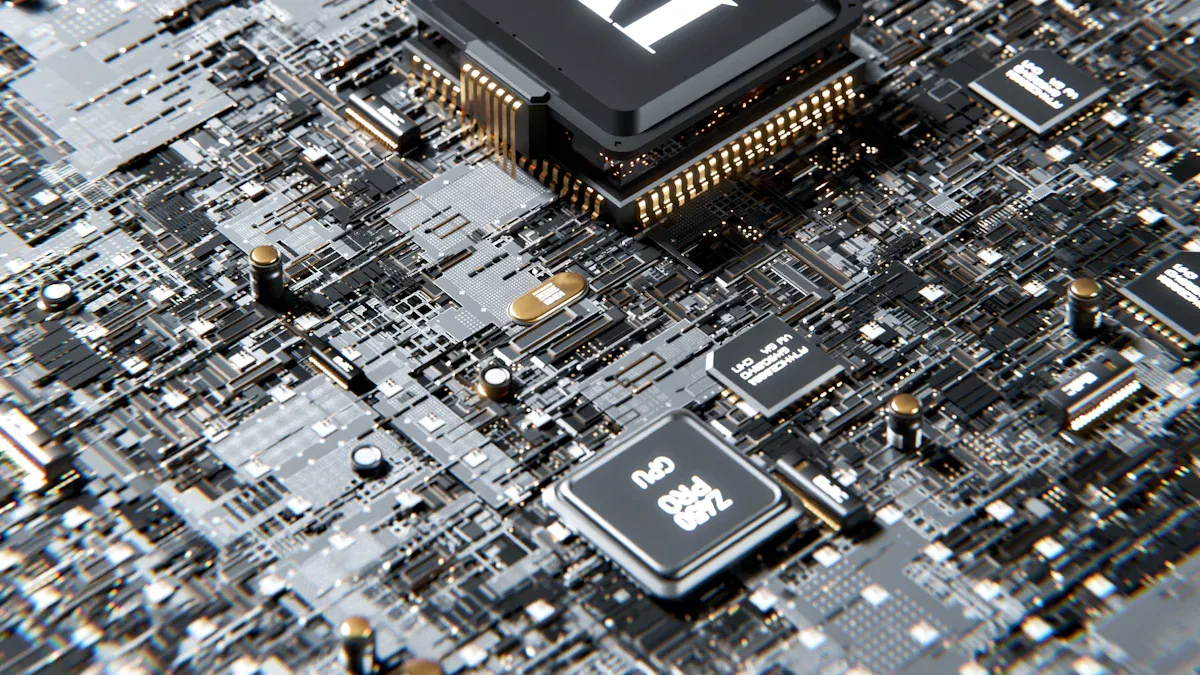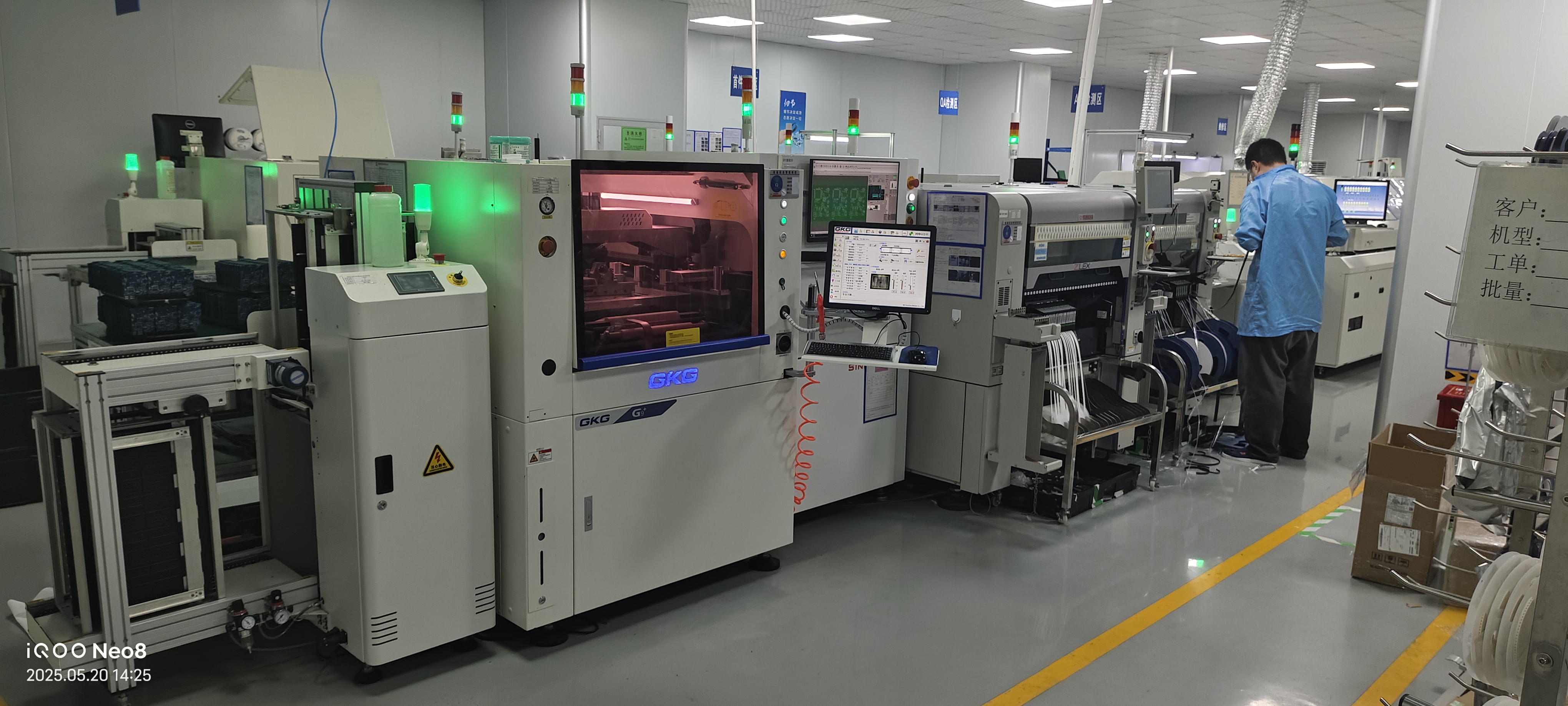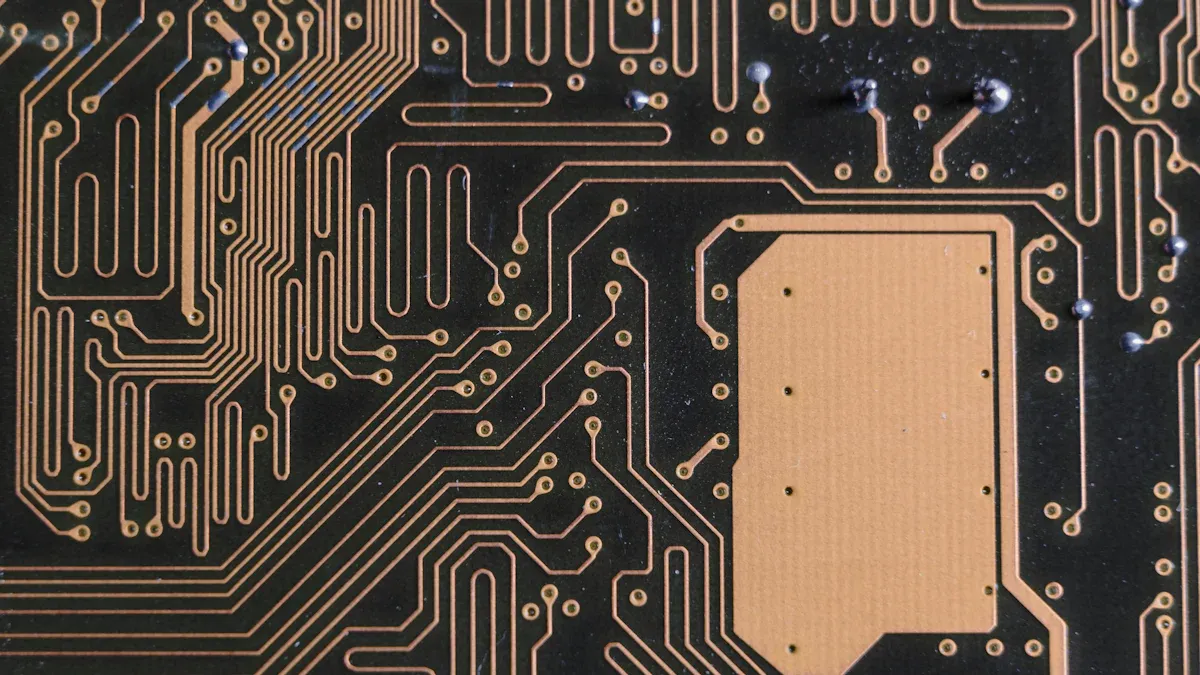How to Optimize Your SMT PCB Assembly Process for Maximum Efficiency and Yield

Optimizing SMT PCB assembly significantly saves time and money. Proper component placement minimizes errors, while automated inspections ensure consistent quality. Enhanced soldering techniques and prompt feedback reduce the need for corrections, effectively lowering costs. By optimizing SMT PCB assembly, production time can be reduced by up to 60%, enabling faster product launches and increased profitability.
Key Takeaways
Improving SMT PCB assembly can cut production time by 60%. This helps launch products faster and make more money.
Automated tools like pick-and-place machines and AOI systems reduce mistakes. They also improve first-pass success, saving time and money.
Keeping SMT machines clean and adjusted is very important. It prevents delays and keeps production quality high.
Understanding SMT PCB Assembly and Its Impact on Efficiency and Yield
Key steps in SMT PCB assembly
The SMT assembly process has important steps for making circuit boards. First, solder paste is added to the PCB using a stencil. This paste goes on the pads where components will be placed. Next, machines called pick-and-place put parts on the board. These machines are very accurate, which helps avoid mistakes and saves time. After this, the board is heated in a reflow oven. The heat melts the solder paste, connecting the parts to the board.
After soldering, the board is checked for problems. Automated Optical Inspection (AOI) machines look for issues like misplaced parts or bad soldering. Finally, the board is tested to make sure it works properly. Each step is important for making good boards and reducing waste.
Skipping regular maintenance on SMT machines can cause big delays. Companies can lose over $1,000,000 each year from wasted time and poor-quality products. This shows why every step must be done carefully.
How SMT manufacturing influences yield and efficiency
SMT manufacturing affects how many good boards are made and how fast. Using machines reduces mistakes and speeds up work. For example, AOI machines can raise first-run success rates from 70% to 97%. This means fewer fixes and more time saved. SMT also allows for smaller and more advanced designs, which are needed for today’s electronics.
Benefit | Impact on Yield |
|---|---|
Faster inventory management | Saves time |
Solving part shortages | Speeds production |
Fewer workers needed | Improves results |
More automation | Cuts costs |
Better AOI systems | Fewer mistakes |
Efficiency of SMT lines is also very important. Most SMT lines work at about 52% efficiency, which can be improved. By fixing workflows and using better methods, you can make more boards and waste less.
Proven Techniques to Optimize SMT PCB Assembly

Making component placement faster and more accurate
Placing components correctly helps make SMT assembly quicker and better. Machines called pick-and-place systems are key for this. They use smart technology to put parts exactly where they belong. This reduces mistakes by over 60% compared to doing it by hand. These machines can place more than 40,000 parts every hour. This speeds up production while keeping quality high.
To improve even more, feedback systems are very helpful. These systems watch the placement process and fix problems right away. They lower defect rates by 60%, saving time and improving first-run success. Adding precise placement methods to your process makes assembly better and keeps quality steady.
Tip: Calibrating pick-and-place machines often helps avoid alignment problems during assembly.
Improving reflow soldering for better results
Reflow soldering is a key step that affects how many good boards you make. To make it better, focus on how solder paste is printed. Over half of soldering mistakes happen during stencil printing. Fixing alignment and applying paste evenly can reduce errors and make boards more reliable.
Heating in the reflow oven also matters. Uneven heat can cause bad solder joints, wasting up to 50% of production costs. Modern ovens with advanced heat controls spread heat evenly. This lowers defects and improves the quality of circuit boards.
Note: Using 3D solder paste inspection tools can catch printing problems early. This prevents costly fixes and improves first-pass success.
Using automated tools for better inspections
Automated inspection tools are great for keeping quality high in SMT assembly. Inline AOI systems use smart programs to find problems like bad parts, solder issues, or board defects. These tools check shapes, pixels, and features to spot mistakes accurately.
Both 2D and 3D AOI systems have benefits. 2D AOI is cheaper and works well for surface problems. 3D AOI takes pictures from different angles to find harder issues. Better lighting and improved reference boards help reduce false alarms, making inspections faster and easier.
Evidence Type | Description |
|---|---|
Advanced Algorithms | Find problems using pixel checks, shapes, and features. |
Defect Types Detected | Includes bad parts, solder issues, board defects, and marking errors. |
2D and 3D AOI Systems | 2D AOI is cheaper for surface issues; 3D AOI finds harder problems with multi-angle images. |
Reducing False Calls | Use better lighting, improved reference boards, and regular machine care. |
Automated inspection tools save time by reducing manual checks. Adding these tools to your process boosts first-run success and keeps quality steady for all batches.
Leveraging Advanced Tools and Technology in SMT Manufacturing

LTPCBA’s advanced pick-and-place machines for precision
In SMT manufacturing, being precise is very important for good results. LTPCBA’s advanced pick-and-place machines are made to work with great accuracy. These machines use modern technology to place parts exactly where they should go. This helps keep everything aligned during soldering and reduces mistakes.
Feature | Traditional SMT Packages | |
|---|---|---|
Cost | Costs less to assemble | Costs more to assemble |
Alignment | Aligns itself during soldering | Needs manual fixing |
Size | Smaller and thinner | Bigger and thicker |
Heat Control | Easier to manage heat | Harder to control heat |
Wiring | Simpler wiring | More complicated wiring |
Connection Density | Higher connection density | Lower connection density |
These machines also let you watch the process in real time. You can check if parts are placed correctly and fix problems right away. With tools like statistical process control (SPC), LTPCBA keeps performance steady and spots issues early. This helps make the process more reliable and reduces delays.
Tip: Calibrating pick-and-place machines often can improve accuracy and make them last longer.
Optimizing reflow ovens for consistent soldering quality
Reflow soldering is a key part of making circuit boards. Modern reflow ovens, like the ones LTPCBA uses, heat boards evenly to avoid problems. These ovens have zones with controlled temperatures to prevent stress and defects. This is especially helpful for small, complex parts that need even heating.
Multi-zone ovens adjust to different needs, saving time and improving efficiency.
Watching heat levels in real time ensures every board meets quality standards.
Systems like the KIC RPI show heat profiles instantly, catching problems early. This reduces the need for late fixes and improves success rates.
By improving your reflow soldering process, you can make better boards with fewer errors. This also lowers costs by reducing the need to fix mistakes.
Note: Checking solder paste with 3D tools before soldering can catch alignment problems early and improve results.
Automated Optical Inspection (AOI) systems for defect detection
Finding defects is very important for making high-quality boards. Automated Optical Inspection (AOI) systems make this faster and more accurate than older methods. These systems use smart programs to find problems like misplaced parts, bad soldering, or board flaws.
Metric | Rate Change |
|---|---|
Defect escape rate | Cut down by 85% |
First-pass yield | Improved from 92% to 98% |
3D AOI systems take pictures from different angles to find hard-to-see issues. They reduce false alarms and ensure only good boards move forward. Real-time checks allow quick fixes, keeping production on track.
AOI speeds up inspections and reduces waiting time.
Early problem detection lowers costs and keeps production smooth.
Data from AOI systems helps improve processes over time, making assembly better.
Adding AOI systems to your workflow helps you make more good boards on the first try. It also keeps quality steady across all batches.
Callout: Studies show that using 3D AOI systems improves defect detection by 65% compared to older methods.
Making SMT PCB assembly better helps save time and money. Checking designs, testing early, and planning well improve reliability. Faster methods, like using machines and better processes, speed up production. LTPCBA’s smart tools and focus on quality ensure steady results. They also help create solutions that can grow with your needs.
FAQ
What is the most important step in SMT PCB assembly?
Applying solder paste is very important. Aligning the stencil correctly spreads paste evenly. This lowers soldering mistakes and makes your PCB assembly better.
Tip: Clean stencils often to keep paste application steady.
How can you make first-pass yield better in SMT assembly?
Use automated tools like AOI systems and 3D paste inspection. These tools find problems early, cutting down on fixes and improving success rates.
Why does reflow oven calibration matter?
Calibrating reflow ovens spreads heat evenly. This stops soldering problems like cold joints or overheating, keeping your PCBs reliable.
Note: Check temperature profiles regularly to keep soldering quality steady.
See Also
Effective Strategies for Optimizing SMT Lines in PCBA
Common Methods and Processes for SMT Assembly
Designing PCBs for Enhanced SMT Processing Efficiency
